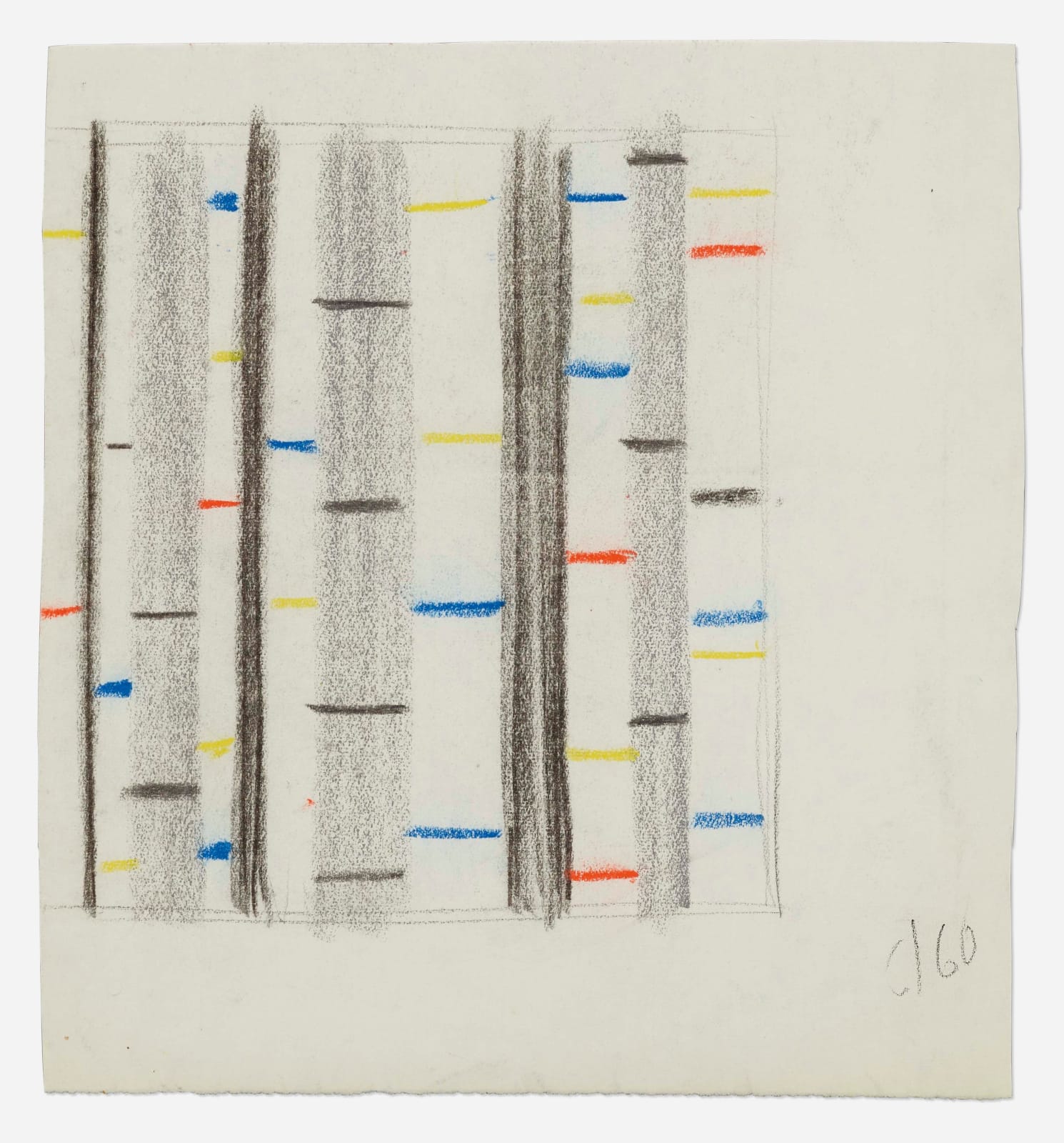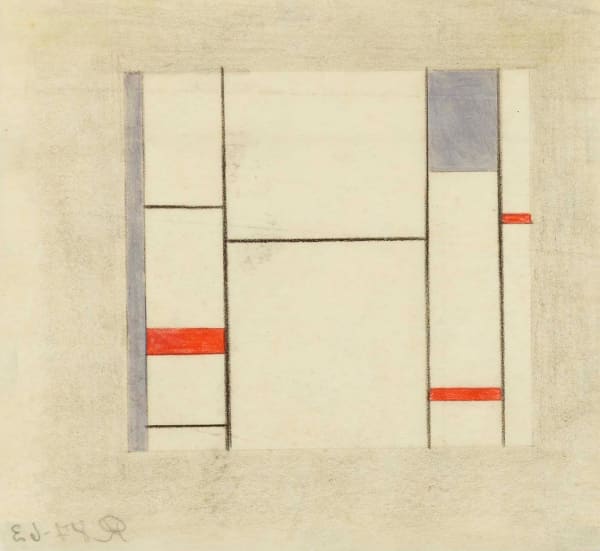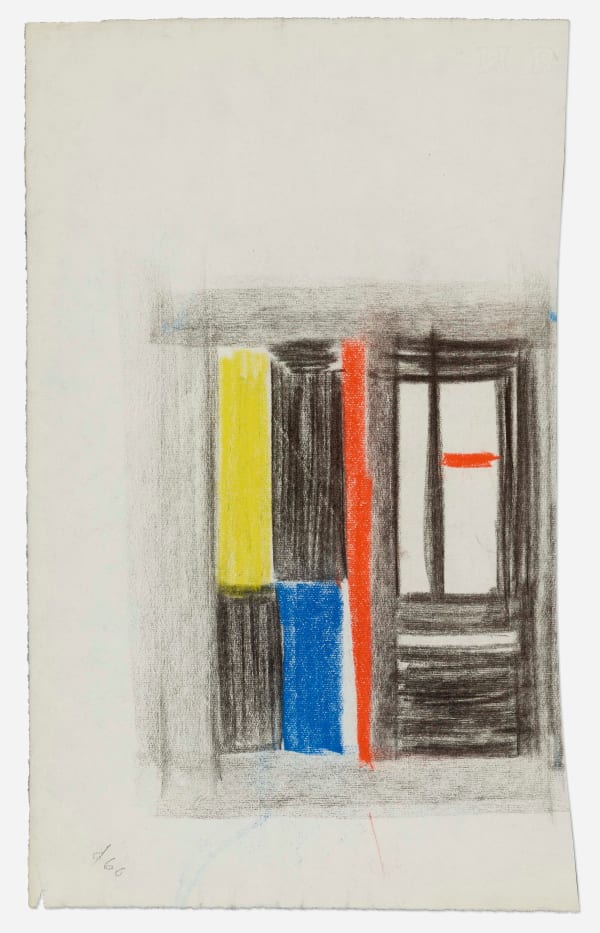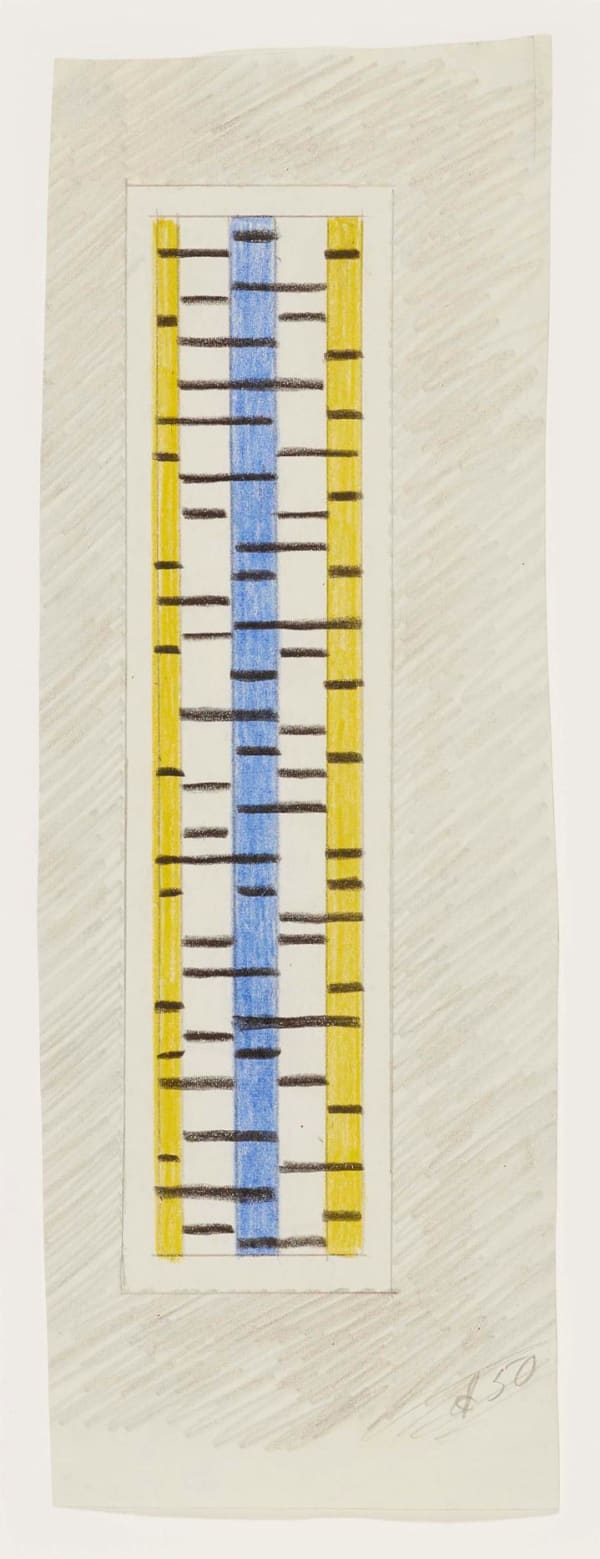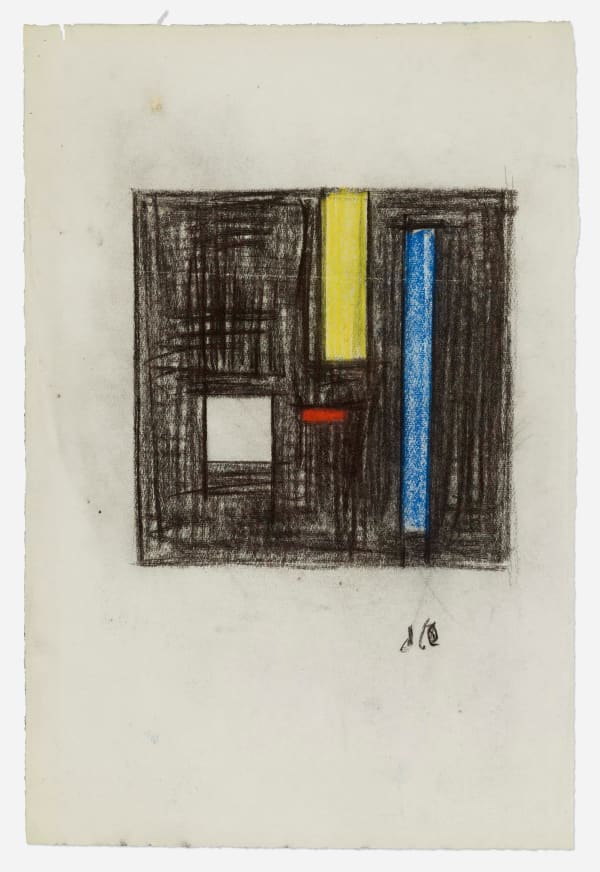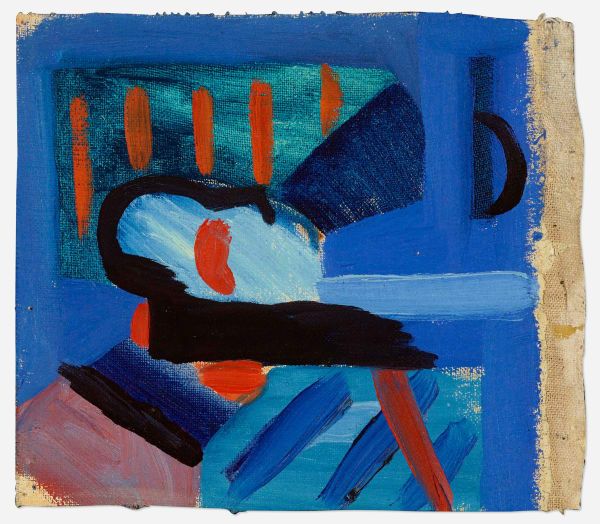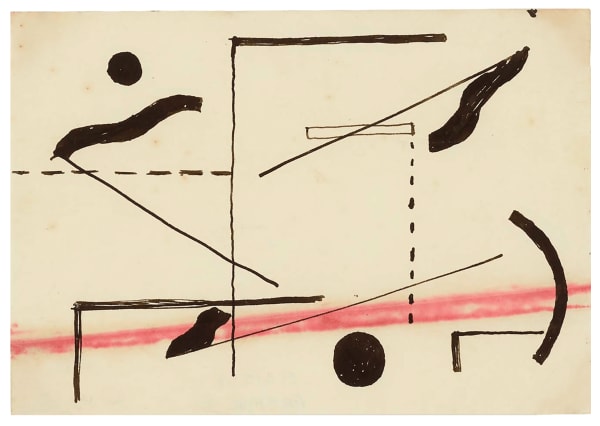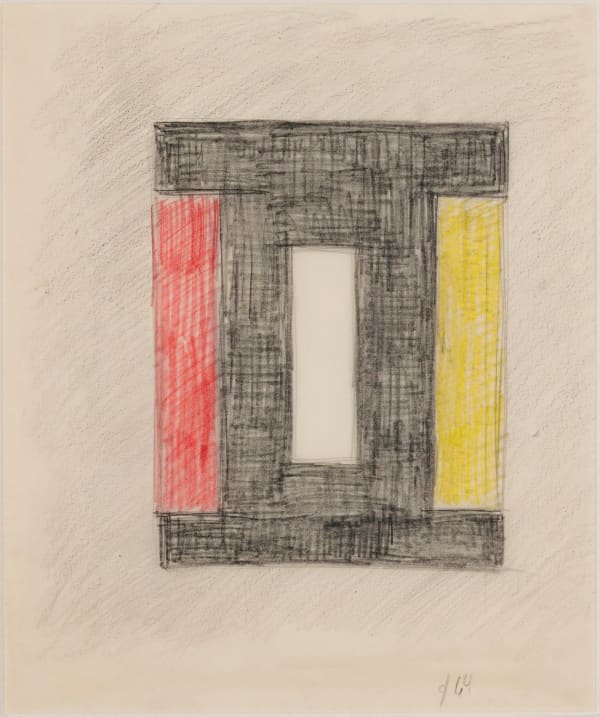Burgoyne Diller American, 1906-1965
37.5 x 34.9 cm.
Provenance
Spanierman Gallery, New YorkBurgoyne Diller (b. 1906) was among the first American artists to explore the possibilities of hard-edge geometric abstraction and colour field in his work. After attending the New York Art Students League and working with the WPA for a number of years, Diller's style became more geometric as he began to integrate European Neoplasticism and Constructivism (particularly the ideas of Piet Mondrian and Kazimir Malevich) into his work.
“[F]or Diller, abstraction was “the ideal realm of harmony, stability, and order.” In the 1930s, he was the first American artist to embrace the conventions of the international art and design style called Neo-Plasticism founded by Dutch artist Piet Mondrian: grid-like compositions and a palette limited to black, white, and the primary colors. Many of his paintings were first conceived as collages—he would plan the composition by arranging paper cutouts of lines, squares, and rectangles.” (Minneapolis Institute of Art)
- X
- Tumblr
-
 Burgoyne Diller, Second Theme (BD 63X), ca. 1948
Burgoyne Diller, Second Theme (BD 63X), ca. 1948 -
 Burgoyne Diller, Untitled (BD 368X), 1960
Burgoyne Diller, Untitled (BD 368X), 1960 -
 Burgoyne Diller, Third Theme, 1950
Burgoyne Diller, Third Theme, 1950 -
 Burgoyne Diller, Composition, 1960
Burgoyne Diller, Composition, 1960 -
 Burgoyne Diller, Color Sketch, 1932
Burgoyne Diller, Color Sketch, 1932 -
 Burgoyne Diller, Untitled, 1962
Burgoyne Diller, Untitled, 1962 -
 Burgoyne Diller, Abstraction
Burgoyne Diller, Abstraction -
 Burgoyne Diller, Untitled (First Theme), 1964
Burgoyne Diller, Untitled (First Theme), 1964 -
 Burgoyne Diller, Abstract Composition, 1950
Burgoyne Diller, Abstract Composition, 1950
